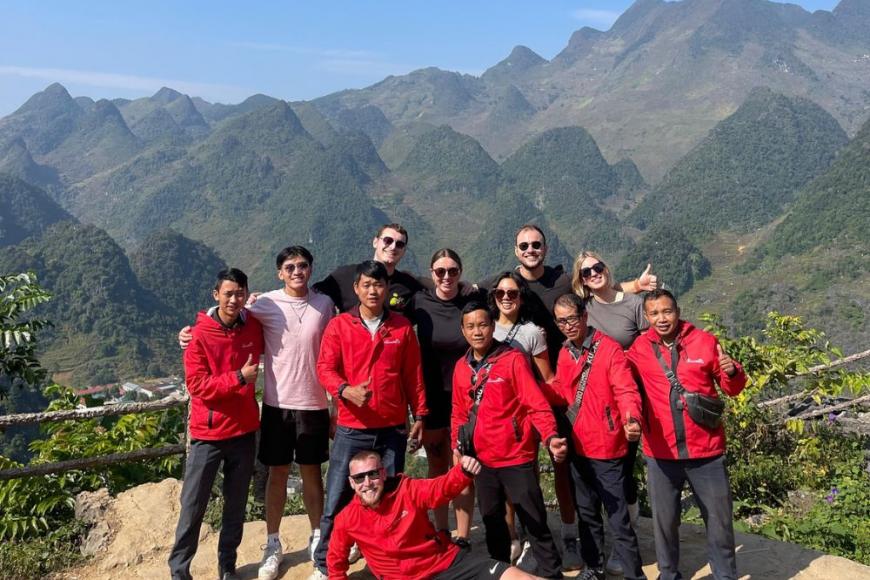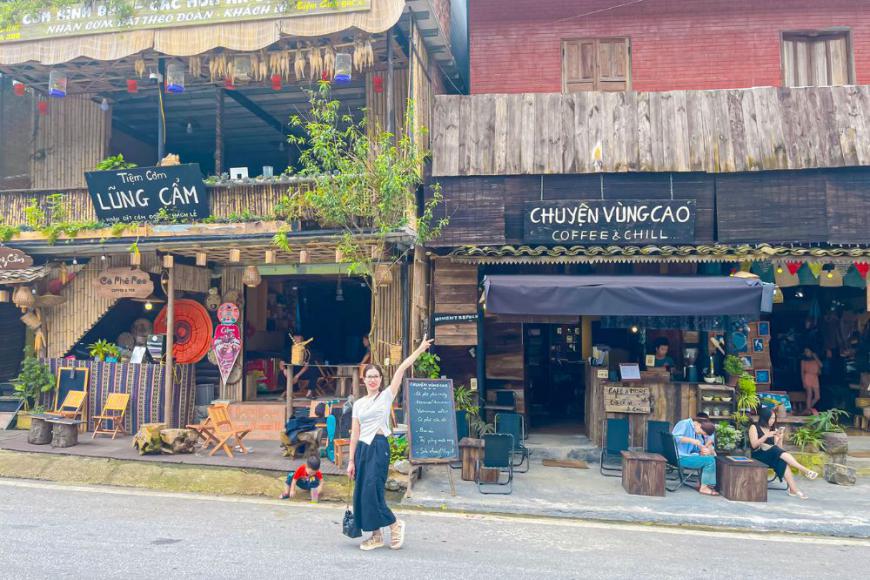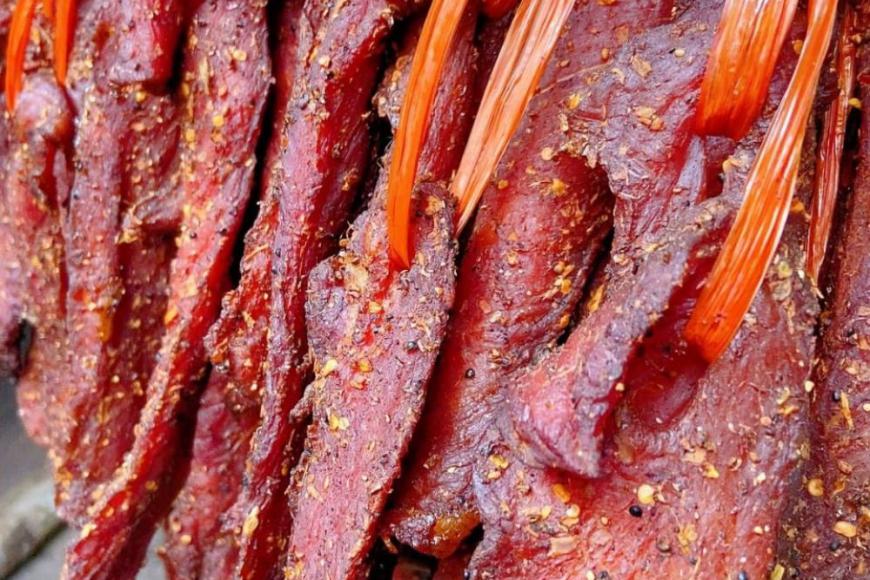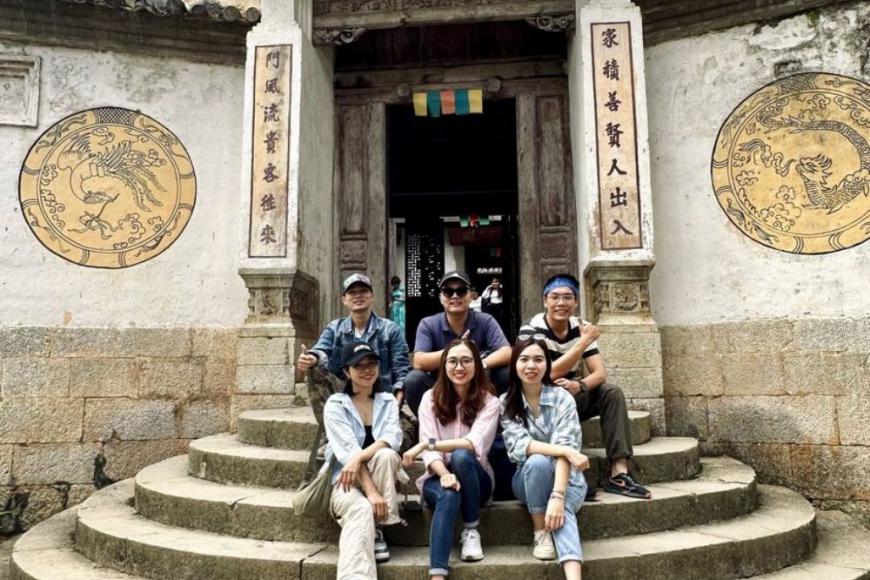- Nha Trang Travel Information
- Muine Travel Information
- Hue Travel information
- Cantho travel information
- Sapa travel information
- Ha Giang Travel Guide
- Ninh Binh Travel Information
- Quy Nhon Travel Information
- Vietnam Travel Information
- Hoian Travel Guide
- Vung Tau Travel Information
- Quang Binh Travel Information
- Phu Quoc Travel Information
- Ha Tinh Information
- Ca Mau information
- Quang Ninh Travel Information
- Tay Ninh Travel information
- Hoian travel guide
- Tien Giang travel guide
- Con Dao Travel information
- Ninh Thuan information
- Moc Chau information
- Danang Vietnam Travel Information
- Hanoi Travel Information
- Ho Chi Minh Travel Information
- Dalat Travel Information
Best Time To Visit Ha Giang
The province of Ha Giang is well-known throughout Vietnam for its breathtaking mountain ranges and valleys. It is located in the country's Northeast area.
It is crucial to know when the best time to visit Ha Giang is so that you can take in all of the stunning natural scenery that this region has to offer. This page discusses the climate of Ha Giang, the four distinct seasons that occur there, the ideal time of year to travel to Ha Giang, and activities that shouldn't be skipped.
Ha Giang Weather
The province of Ha Giang is characterized by its rugged terrain and may be found in the most northern part of Vietnam. As a result, this vacation spot enjoys the usual weather environment of the Northern Hemisphere, complete with all four distinct seasons: spring, summer, fall, and winter. Particularly during the winter, the climate of Ha Giang is chillier than that of neighboring northern midlands and plains.
There are three distinct regions within Ha Giang, and each has its own unique temperature and climate: Dong Van to Meo Vac, Quan Ba to Bac Vi Xuyen, and Yen Minh. Yen Minh has a more temperate environment with a higher average temperature than the surrounding areas of Dong Van - Meo Vac and Quan Ba, which have an annual average temperature ranging from 12 to 18 degrees Celsius.
You should try to avoid traveling to Ha Giang during the monsoon season, which typically runs from the beginning of July until the middle of September.
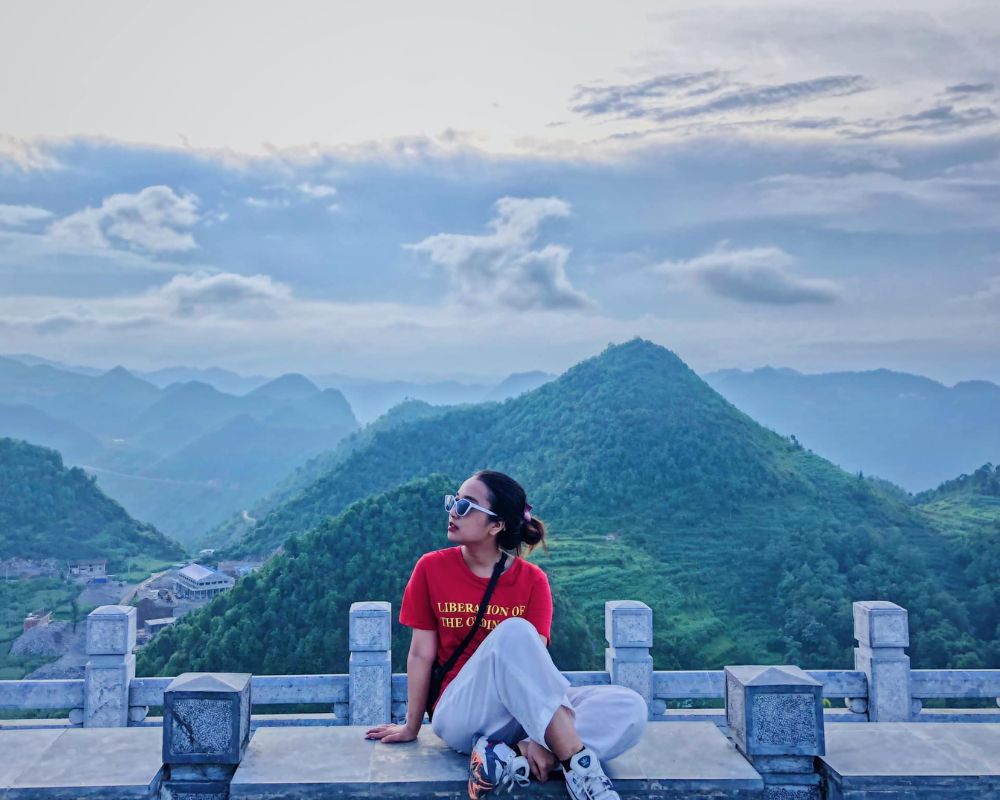 Girl checking in at Lung Cu Flagpole
Girl checking in at Lung Cu FlagpoleDuring this time of year, there is an increased likelihood of mudslides as well as an increase in the water level of rivers.
While a Vietnamese tour guide and a Dutch tourist were climbing a mountain pass in the Meo Vac District on a motorbike the previous year, a landslide in Ha Giang caused both of them to sustain injuries. Both of the men sustained life-threatening injuries and had to be taken to a nearby hospital for treatment.
Rain can also be caused in Ha Giang by the abrupt transformation of East Sea storms into depressions. These storms might come from anywhere in the world.
As a result, it is possible to put oneself in harm's way whether driving the Ha Giang lope or exploring off-the-beaten-path locations inside the region.
>>> Read more: ITINERARY FOR THE HA GIANG LOOP IN 4 DAYS
January to March in Ha Giang
Because of the pleasant weather and environment and the lush and green landscape, the months of January to March are the best time to visit Ha Giang. The landscape is absolutely breathtaking during this time of year due to the abundance of vibrant wildflowers, peach blossoms, and plum blossoms.
Temperatures in the range of 15 to 25 degrees Celsius are present and very agreeable. Because of this condition, it is ideal for engaging in activities that take place outside, such as hiking, trekking, and investigating the local market. Do not pass up the opportunity to travel to the Dong Van Karst Plateau, the Lung Cu Flag Tower, to go hiking along the Ma Pi Leng Pass, or to drive along it.
In addition, by coming to Ha Giang at this time, you will have the opportunity to take part in the important festivals that are held by the local people. The following is a list of intriguing festivals that you would not want to miss out on.
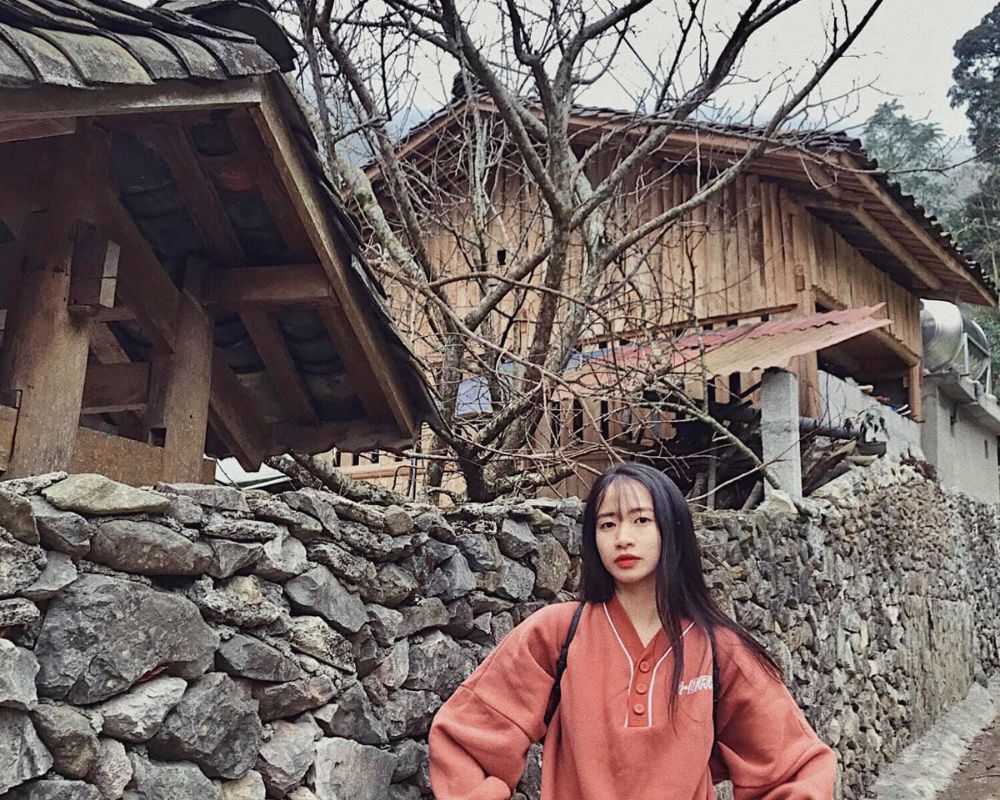 Explore Pao's House in Ha Giang
Explore Pao's House in Ha GiangApril to June in Ha Giang
Because of its flavorful weather conditions, the season from April to June is also best time to visit Ha Giang. The weather in Ha Giang right now is hovering between around 20 degrees Celsius on average. It is a wonderful opportunity to get a glimpse of the local way of life, indulge in the delectable cuisine of the area, and see the breathtaking natural scenery of the area.
If you plan your trip to Ha Giang so that you are there on the 27th of March according to the Lunar calendar, you will have the opportunity to participate in the Khau Vai Love Market Festival. You will be able to observe locals attending the festival dressed in their customary garb, dancing, singing, buying items, and other activities.
It is during the pouring water season in May and June that Ha Giang is visited. During this time, the terraced rice fields looked like a gigantic mirror. As you make your way through the villages, you will come across local farmers who are hard at work getting ready for the upcoming harvest.
>>> See more: TOP 15+ BEST THINGS TO DO IN HA GIANG, VIETNAM
July to October in Ha Giang
The fall season, which begins in July and continues through October, is by far the most pleasant time to go to Ha Giang. The air is clear and crisp, and temperatures range from 10 to 25 degrees Celsius, making it a pleasurable experience to travel to this breathtaking location and take in its sights. Additionally, this is the time of year when the rice terraces take on a golden hue, making for a breathtakingly lovely view.
Exploring Ha Giang in the months of July and Autumn can be quite difficult due to the abundant rainfall. The roads are sometimes wet and icy, making driving hazardous, and the scenery may be covered by rain or fog. If, on the other hand, you don't mind the rain and you want to enjoy the one-of-a-kind beauty of Ha Giang during this time of year, you'll find the scenery to be extraordinarily reflective. Be careful to bring along appropriate rain clothing, and be ready for the possibility of road closures and delays. The following is a list of activities that are available in Ha Giang during the fall season.
- The Dong Van Karst Plateau
- Visiting the Ma Pi Leng Pass on a guided motorbike excursion or on foot
- Paying a visit to the marketplaces located nearby
- Activities such as climbing and trekking in the area surrounding the Lung Cu Flag Tower, the Thon Tha Valley, and the Nam Dam Village
- Getting a taste of the regional delicacies
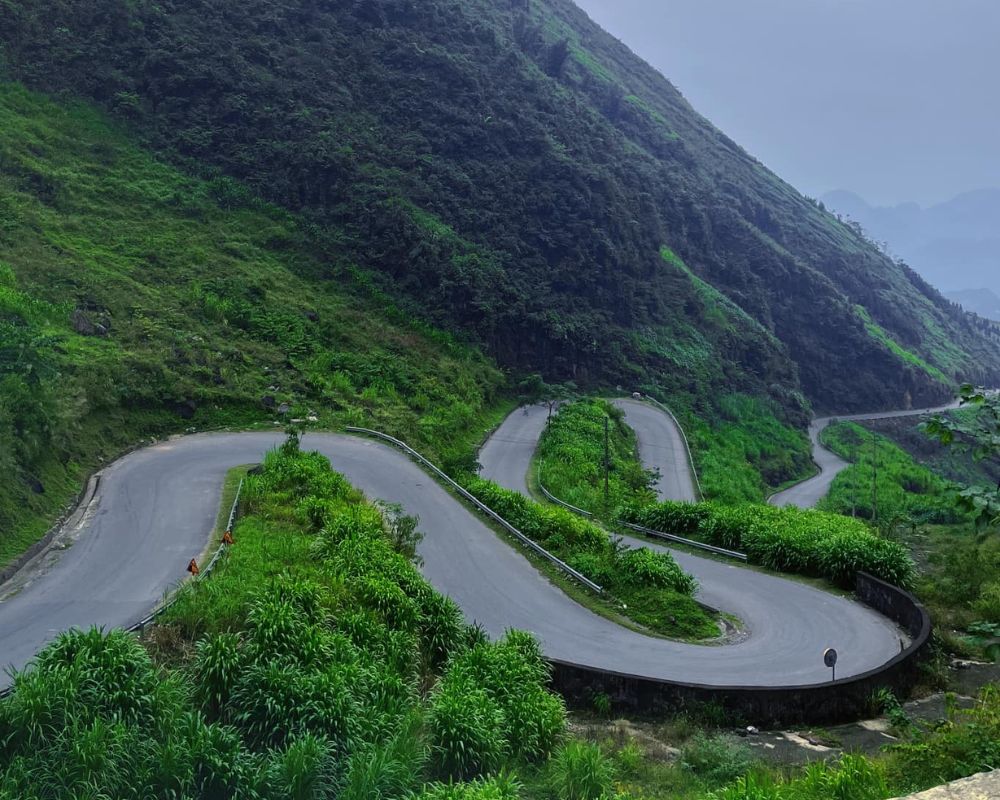 Ma Pi Leng Pass, Ha Giang
Ma Pi Leng Pass, Ha GiangOctober to December in Ha Giang
Temperatures in Ha Giang in the winter, which runs from October to December, may get rather cold, dipping to as low as 0 degrees Celsius in some of the region's more elevated locations. The landscape, on the other hand, can be quite breathtaking during this time of year, particularly if you get the chance to see the snow-capped peaks. Even though the terraced rice fields are deserted, the sights are still breathtaking, and the mood is peaceful and tranquil.
 Take a boat trip on Nho Que River
Take a boat trip on Nho Que RiverA trip to Ha Giang at the moment would be ideal if you are interested in seeing the buckwheat blossom in full bloom. The Lung Cu Flag Tower, the Lung Cam - Sung La cultural village, Ma Pi Leng Pass, and Quan Ba are some of the most suitable sites to go to get the best view of buckwheat blossom. The Buckwheat Flower Festival, which normally takes place in the months of October or November in the Dong Van District, is an excellent opportunity to take in the stunning pink and white blossoms.
In addition to that, you will have the opportunity to explore the vibrant cultural spaces that are associated with different ethnic communities. During the festival, you will have the opportunity to participate in a variety of activities, such as the cultural festival of ethnic groups in the Quan Ba district, the Lo Lo ethnic cultural festival in the Meo Vac area, a local culinary contest, the manufacturing of traditional ethnic musical instruments, and other activities. A trip to Ha Giang in the winter might be one of a kind and leave a lasting impression on the traveler. Just remember to bring along some warm clothing and be on the lookout for potential road closures or delays caused by the weather.
In conclusion, it does not matter when time of year you choose to visit Ha Giang because you will still be able to appreciate this location's natural beauty. If you are interested in receiving additional information, please do not be reluctant to get in touch with us.
other
Are you planning on doing Ha Giang Loop in Vietnam? Do you worry about safety, roads and the other concerning problems? Vietnam Trust Car Rental - The professional experts will offer all of everythings before taking on the loop in Vietnam. The below information sets off with all the details during your journey.
What to eat in Ha Giang? Discover the top 10 must-try foods in Ha Giang in this guide. Let's do it with Vietnam Trust Car Rental.
Ha Giang is a well-known destination in Vietnam with its magnificent landscapes and cultural wealth. Besides, when traveling here, you do not miss out on Ha Giang cuisine, alluring you with flavors that are deeply rooted in the customs of the area.

